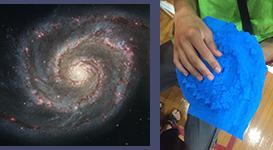Informing the Future with Reflections on Prior ITEST-like Experiences by Current STEM Professionals
One PagerTextured Tactile 3D Prints of Astronomical Data for the Career Exploration Lab and Other Applications
Curricular MaterialsImage

Astronomy has been a fascinating subject for the public for centuries and can stimulate deep questions not only on our own origin but subtly the richness of science and mathematics. It also is a science that is associated with engineering and technology to probe the universe.Typically, astronomical data is translated into visual representations for analysis and general public communication. Unfortunately, this practice is problematic for individuals with blindness or visual impairment (B/VI). In response, we transformed astronomical research data and models into textured 3D prints for tactile